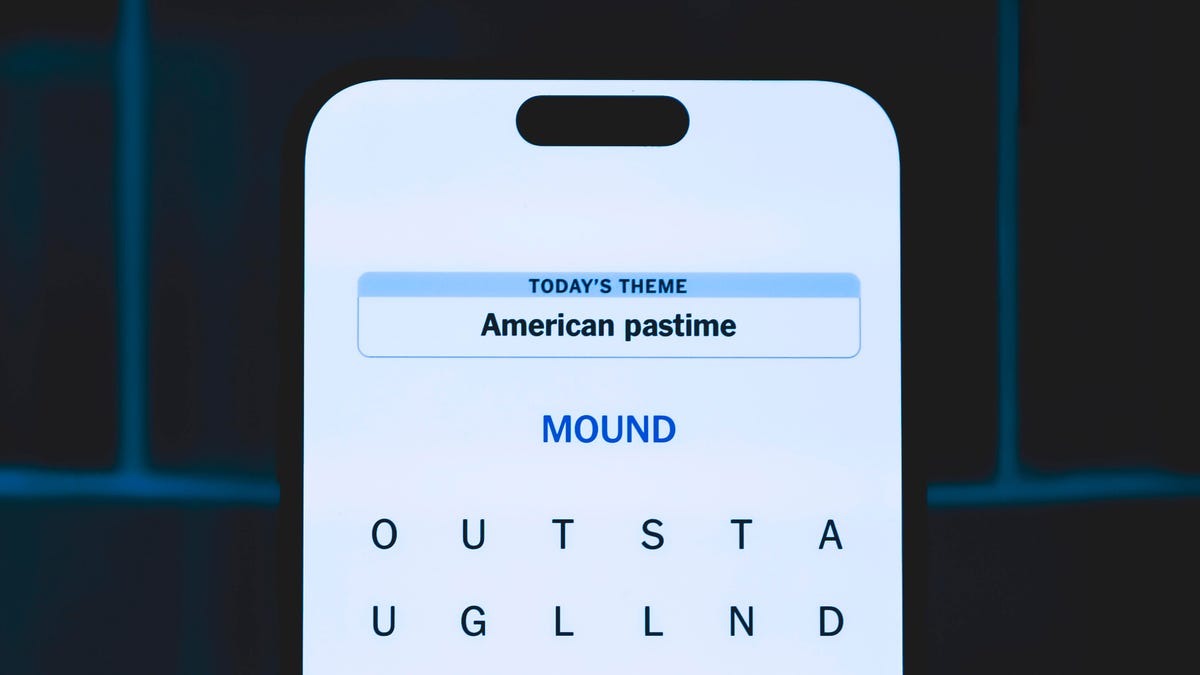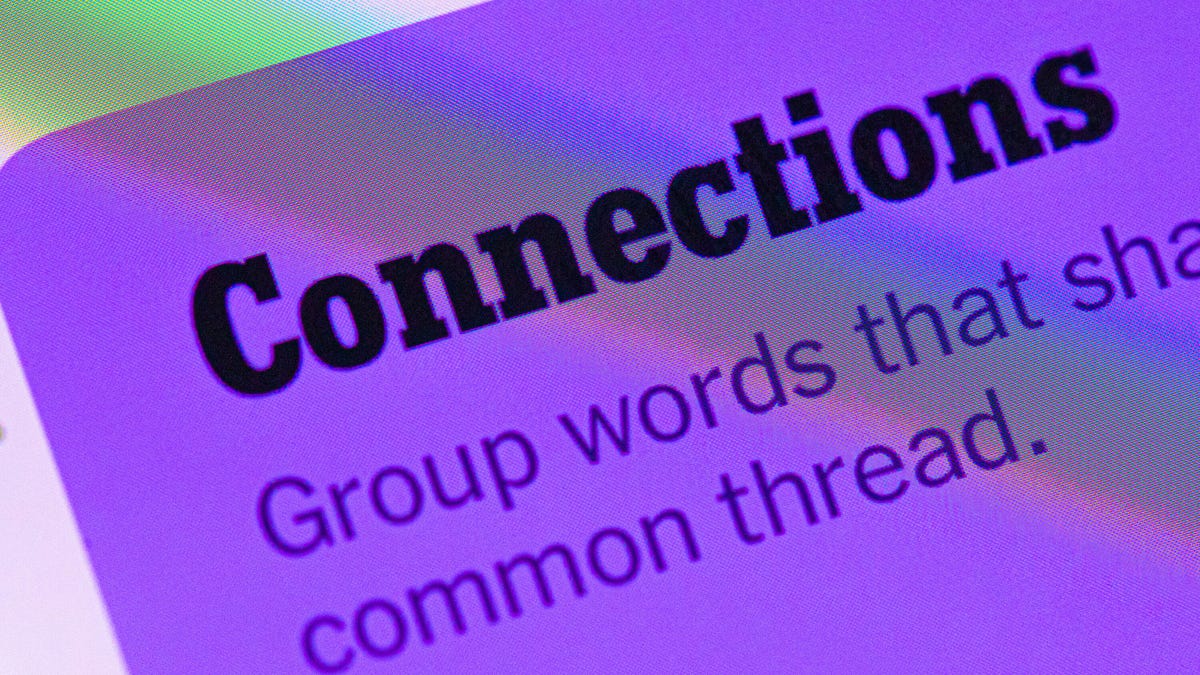Technologies
Best Live TV Streaming Service for Cord Cutting in 2022
Are you looking to cut cable but want to keep live sports, news and originals? YouTube TV, Hulu Plus Live TV or Sling TV could be the services for you.

In this article:
- Top live TV streaming services compared
- Live TV streaming services we also tested
- How to shop for cord-cutting live TV services
- What streaming TV services won’t give you
- Don’t care about live TV? More cord-cutter staples
- Is an indoor or outdoor antenna a viable option?
- Conclusion: Try it yourself
Cutting the cable cord is a popular way to save money, but you may find you need to augment your Netflix or Disney Plus with live broadcasts as well. Enter live TV streaming services. These cancel-anytime live TV bundles give you the ability to watch local and national news as well as live sports and events. All you need is a streaming device or smart TV.
Unlike on-demand platforms, live TV streaming services offer you a live channel lineup, and they also don’t need a contract like cable does. The best services start at $40 a month, which can help save you money on a cable subscription, while the more expensive services such as YouTube TV are closer to $70. Whichever you choose, you can stream live channels such as CNN, NBC, ESPN and Fox on a host of different devices, including set-top boxes and mobile devices. It’s easy to get started — you don’t even need a technician to stop by your home.
Read more: Cable vs. Streaming Services: Which Is Cheaper? We Do the Math
What’s the downside? Pricing and channel availability are two things that are still in a state of flux. For instance, Sling TV went up by $5 in November. In addition, sometimes less popular services, such as AT&T TV Watch TV, TVision or PlayStation Vue, are simply phased out.
Welcome to the brave new world of live TV streaming over the internet. If you need help deciding on the best streaming service or streaming bundle, read on. We’ll continue to update this best streaming service list periodically as things change (which they frequently do).
Live TV streaming services we also tested
- Philo: A cheap live TV streaming service with a variety of channels, but it lacks sports channels, local stations and big-name news networks — although Cheddar and BBC news are available. Philo offers bread-and-butter cable staples like AMC, Comedy Channel, Nickelodeon and Magnolia Network (formerly DIY), and specializes in lifestyle and reality programming. It also includes a cloud DVR and optional add-ons from Epix and Starz. We think most people are better off paying another $15 for Sling TV’s superior service, but if Philo has every channel you want, it’s a decent deal. Read our Philo review.
- FuboTV: There’s a lot to like about FuboTV — it offers a wide selection of channels and its sports focus makes it especially attractive to soccer fans or NBA, NHL and MLB fans who live in an area served by one of FuboTV’s RSNs. It’s also a great choice for NFL fans since it’s one of three services, alongside YouTube TV and Hulu, with NFL Network and optional RedZone. The biggest hole in Fubo’s lineup is the lack of Turner networks, including CNN, TNT and TBS — especially since the latter two carry a lot of sports content, in particular NBA, NHL and MLB. Those missing channels, and the similar $70 price tag, makes it less attractive than YouTube TV for most viewers. Read our FuboTV review.
How to shop for cord-cutting live TV services
Each of the TV streaming services above offers a different mix of channels, so your first step should be choosing one that carries your «can’t miss» cable channels and shows. And some of the most important channels are locals, namely ABC, CBS, Fox and NBC. Not every service offers all of them in every area, but the best streaming service for you will include the majority of what you love to watch, so it is worth shopping around. The live TV streaming service lineups are in constant flux as networks scramble to secure access to popular channels (ones with highly watched original shows and regional sports networks are especially in demand). There’s also the chance that a certain cable channel could disappear from a certain service after a network contract expires, which is what happened in 2020 with the regional sports networks.
These negotiations lead to other changes, too. Over the past few years, Sling TV, Hulu (multiple times), Philo and the newly renamed DirecTV Stream have all raised their prices. Google and Roku resolved a contract dispute which prevented users from downloading the YouTube TV app, while users lost the use of Disney channels for two days due to a different dispute.
Broadly, each of these streaming services can be broken down into two main groups: Budget, with prices ranging between $25 and $40 and few or no local channels; and Premium, with prices from $65 and up including local channels and supercharged cloud DVRs. That’s right, all of the services allow you to record and play back shows, just like a traditional cable or satellite DVR, but they often come with restrictions.
Read more: Top 100 Channels Compared Across Hulu, Sling TV, YouTube TV, FuboTV, DirecTV Streamand Philo
Next, there’s the multistream question. If you want to watch more than one program at the same time — for example, on your living room TV and on a bedroom TV, or the main TV and a tablet or other devices — you’ll want to make sure the video streaming service you’re watching has enough simultaneous streams. Sling Orange only allows one stream at a time, and if you try to watch a second, it’s blocked. Other services have higher simultaneous stream limits.
Keep in mind that, especially if you do have more than one person watching at once on supported devices, you need to make sure you have fast, reliable broadband internet. A 100Mbps download service will cost around $50 to $60 a month, and sadly that’s where the savings of cutting cable can get swallowed up.
Here’s a live TV streaming shopping list to consider:
- Does the service offer your «must-have» channels? See CNET’s comparison of the top 100 channels here.
- Does it offer local channels in your area?
- How good is the cloud DVR?
- Does the interface make it easy to browse for shows?
- Are there enough simultaneous streams for you and your family?
- Is your internet connection up to snuff? See CNET’s guide to improving streaming quality here.
What streaming TV services won’t give you
Streaming TV services are great, but there are some things they can’t do compared with a traditional cable box.
First, it’s worth looking at the channels that you can’t get with any of these live TV streaming services. For example, only two of the services are able to offer PBS: YouTube TV and DirecTV Stream.
With sports returning in force from the pandemic-enforced hiatus, fans will want to make sure they can find the sports channels to follow their teams. Most services carry ESPN and local channels for NFL football, but if you follow a professional baseball or basketball team, you might need its specific channel — called a regional sports network or RSN — to watch regular season games. RSN coverage varies widely for each service. Sometimes, even if you live in the right area, you may be mistakenly blacked out due to an IP address error. If this is the case, you can fix this by signing up for a sports-friendly VPN.
Every live TV service’s video streaming is a few seconds to a minute or more behindthe «live» stream you’ll get from your local cable TV or satellite provider. That means you could get a preview of scores or big plays from Twitter, phone alerts or phone calls from friends slightly before you see the action on screen.
If you’re used to 5.1-channel surround offered by cable or even OTA, then you may be disappointed that YouTube is the only service to offer surround sound on live broadcasts. The other services include stereo sound only on live channels, though 5.1 audio is available on some on-demand material.
Don’t care about live TV? More cord-cutter staples
In 2022, streaming fans have more choices than ever, including NBC/Comcast’s Peacock, AT&T’s HBO Max, Apple TV Plus and Disney Plus. While Peacock differs in that it has live news the other services lack traditional live channels — focusing instead on back catalogs and new original programming — but they can still eat into your entertainment budget.
Netflix: One of the first streaming TV services, Netflix is so popular that it’s become a generic term for streaming in the same way as «Magic Marker» or even «Coke» in the South. And then there’s the ever-popular «Netflix and chill.» Ad-supported plans now start at $7 a month, and the service offers thousands of TV shows and movies, including original TV series like The Crown and Stranger Things (be aware you may need to trade up to the $9 plan to watch some content). Then there are Netflix original movies like Oscar winners Roma and The Power of the Dog.
Amazon Prime Video: The «other» major streaming service, which is included as part of a $139 annual Prime Membership or $15 a month. The interface isn’t as user-friendly as Netflix, but the service also offers shows not on its rival, including original content like The Rings of Power, The Marvelous Mrs. Maisel and The Expanse. Amazon Prime also has the ability to add premium channels (HBO and Showtime and more), making it a potential one-stop shop.
Disney Plus: One of the biggest streaming services to launch in some time, Disney has gathered a mix of movies, TV shows and exclusive content, including Loki, Andor and She-Hulk, for $8 a month (though it will increase in December). Read our Disney Plus review here.
Paramount Plus: Previously CBS All Access, Paramount Plus costs $5 a month or $10 monthly for ad-free streaming. The service offers live TV (in some cities), sports and on-demand content from CBS, MTV, BET, Comedy Central, Nickelodeon and Paramount Network, plus its Paramount Pictures movie studio. Paramount Plus also offers exclusive originals such as Star Trek: Discovery, Picard and the Good Fight.
Vudu and Movies Anywhere: Digital libraries (or lockers) that incorporate legacy UltraViolet content and streaming movies and TV that are only available for purchase, such as new releases.
Peacock: Now live nationwide, Peacock is NBC’s answer to Paramount Plus. Its main claim to fame is that its basic tier, with 7,500 hours of content, is free. Peacock Premium unlocks more content for $5 a month while an ad-lite version called Peacock Premium Plus is $10 monthly.
It’s also worth investigating free, ad-supported services such as Roku Channel, Amazon Freevee, Tubi, Pluto and Crackle, which offer a wealth of content. Read CNET’s roundup of free TV services here.
Is an indoor or outdoor antenna a viable option?
If you have a TV in your house — that is, a screen that incorporates a tuner — you’re part-way to cutting the cord already. An affordable indoor antenna hooked up to your TV will let you watch free TV over the air from any channel you receive in your local broadcast area. Antennas cost as little as $10. See our comparison of indoor antennas here.
You can also add a hardware DVR such as the Amazon Fire TV Recast or TiVo Edge for Antenna if you want. Then you can record those live TV antenna channels, play them back and skip commercials, just like on a standard cable TV DVR. Here’s CNET’s roundup of the best OTA DVRs for cord-cutters.
A solid, lower-cost alternative to live TV streaming services is the combination of an antenna for live local channels and an on-demand service such as Netflix or Hulu. That way you’ll still be able to watch live programming and also have a choice of on-demand content.
Conclusion: Try it yourself
Streaming live TV services are still in flux. Since launch, every service has increased its prices by at least $5 a month, TV channel selections and cities with local channel access are changing all the time, and reports persist about some services losing money, or even closing in the case of T-Mobile’s TVision. While streaming is undoubtedly the future, and cable the past, it will be some time before both prices and the services offered settle in.
That said, if you want a cable-like experience both at home and for on-the-go devices, without the dead weight that a cable subscription brings, a streaming service is worth a look. There’s no contract to sign, and if you don’t like the service you’re on, you can easily switch. So whether you’re looking for a basic package such as Sling TV or want to pay more for a deluxe experience from the likes of YouTube TV, there should be a streaming TV service to suit you.
More streaming advice
- Free Movies: 10 Netflix Alternatives That Will Keep You Entertained
- Best TV Shows to Watch on Hulu
- Best TV Antennas for Cord-Cutters
- Best TV for 2022
- Best Universal Remotes for 2022
- Best 75-inch TVs for 2022
- Best Streaming Device in 2022: Roku, Apple TV, Fire Stick, Chromecast and More
- Budget Hack: Replace Netflix and Other Pricey Subscriptions With These Free Versions
- Best TV Shows to Watch on Amazon Prime Video
Technologies
What a Ban Would Actually Mean for DJI Drone Owners and Holiday Shoppers
What’s the secret to a very un-merry shopping season? A brand new, unusable drone.

With Thanksgiving wrapped up and the Black Friday shopping sales here, if a DJI drone is on your holiday wish list, you might want to hit «buy» immediately. The company has issued a stark warning: Its drones could be banned from sale in the US, and the deadline is looming.
The Federal Communications Commission voted 3-0 at the end of October to «close loopholes» that allow tech deemed a «national security risk» to be sold in the US. In plain English, the US government is clearing the path to give DJI the same treatment it gave Chinese phone-maker Huawei, effectively banning its products from the American market.
The US government has deemed DJI, which is based in China, a security risk. It’s also considering a separate ban on TP-Link routers.
DJI is already sounding the alarm, posting on Instagram that a «deadline that could decide DJI’s fate in the US is just 43 days away» (now 19 days away). The company is warning that without an audit, its products could face an «automatic ban.» The US government has long labeled the Chinese drone maker a security risk, and it looks like the hammer might finally be coming down right before the holidays.
Don’t miss any of our unbiased tech content and lab-based reviews. Add CNET as a preferred Google source.
The vote isn’t the end of the road, however. Future bans would need to target specific products and would require a period of public consultation. But it appears the groundwork is being set for the FCC to block sales of future and some existing DJI drones from US shores, as well as products that use DJI technology.
The government has called for a DJI audit by the end of the year, but if that doesn’t happen, DJI drone products could be banned for sale by default under a national security law.
DJI asks for a security audit before any ban
A representative for DJI told CNET that while the FCC vote references a rule change that doesn’t currently apply to DJI specifically, the National Defense Authorization Act deadline in December would put Chinese companies like it on the FCC’s ban list, «without any evidence of wrongdoing or the right to appeal.»
Adam Welsh, head of global policy at DJI, said the company has repeatedly said it would be open to audit, but that «more than 10 months have now passed with no sign that the process has begun.»
«The US government has every right to strengthen national security measures, but this must go hand in hand with due process, fairness, and transparency,» Welsh said.
Welsh said DJI is urging the government to start the audit process or grant an extension.
Will DJI drone owners need to give them up?
Because the ban would apply to new sales, not drones that have already been sold, a DJI drone you already own would still be legal to use — at least under current rules.
Government agencies, however, are prohibited from purchasing or using drones from Chinese companies, including DJI.
DJI’s drones consistently rank high in their product category. In January, they dominated CNET’s list of best drones for 2025. But some of the company’s newest products, such as the DJI Mavic 4 Pro, haven’t been available for sale in the United States.
Even DJI products that are not yet banned may be hard to find. The website UAV Coach has posted a guide to the bans and reports that, due to inventory issues, most DJI drone models are sold out at retailers regardless of future FCC action.
Technologies
Today’s NYT Strands Hints, Answers and Help for Nov. 29 #636
Here are hints and answers for the NYT Strands puzzle for Nov. 29, No. 636.

Looking for the most recent Strands answer? Click here for our daily Strands hints, as well as our daily answers and hints for The New York Times Mini Crossword, Wordle, Connections and Connections: Sports Edition puzzles.
Today’s NYT Strands puzzle is a real puzzler. Some of the answers are difficult to unscramble, so if you need hints and answers, read on.
I go into depth about the rules for Strands in this story.
If you’re looking for today’s Wordle, Connections and Mini Crossword answers, you can visit CNET’s NYT puzzle hints page.
Read more: NYT Connections Turns 1: These Are the 5 Toughest Puzzles So Far
Hint for today’s Strands puzzle
Today’s Strands theme is: What a piece of work!
If that doesn’t help you, here’s a clue: You can build it in a shop.
Clue words to unlock in-game hints
Your goal is to find hidden words that fit the puzzle’s theme. If you’re stuck, find any words you can. Every time you find three words of four letters or more, Strands will reveal one of the theme words. These are the words I used to get those hints but any words of four or more letters that you find will work:
- CREW, REAM, LANE, WHEE, DELL, CANE, PULL, REVEL
Answers for today’s Strands puzzle
These are the answers that tie into the theme. The goal of the puzzle is to find them all, including the spangram, a theme word that reaches from one side of the puzzle to the other. When you have all of them (I originally thought there were always eight but learned that the number can vary), every letter on the board will be used. Here are the nonspangram answers:
- WHEEL, AXLE, LEVER, WEDGE, PLANE, PULLEY, SCREW
Today’s Strands spangram
Today’s Strands spangram is SIMPLEMACHINE. To find it, start with the S that’s three letters to the right on the top row, and wind over and down.
Technologies
Today’s NYT Connections Hints, Answers and Help for Nov. 29, #902
Here are some hints and the answers for the NYT Connections puzzle for Nov. 29, #902.

Looking for the most recent Connections answers? Click here for today’s Connections hints, as well as our daily answers and hints for The New York Times Mini Crossword, Wordle, Connections: Sports Edition and Strands puzzles.
Today’s NYT Connections puzzle is tough. If you need help sorting them into groups, you’re in the right place. Read on for clues and today’s Connections answers.
The Times now has a Connections Bot, like the one for Wordle. Go there after you play to receive a numeric score and to have the program analyze your answers. Players who are registered with the Times Games section can now nerd out by following their progress, including the number of puzzles completed, win rate, number of times they nabbed a perfect score and their win streak.
Read more: Hints, Tips and Strategies to Help You Win at NYT Connections Every Time
Hints for today’s Connections groups
Here are four hints for the groupings in today’s Connections puzzle, ranked from the easiest yellow group to the tough (and sometimes bizarre) purple group.
Yellow group hint: Middle of the body.
Green group hint: Fill-in.
Blue group hint: Nice place to hang out.
Purple group hint: Card game.
Answers for today’s Connections groups
Yellow group: Abdominal area.
Green group: Replacement.
Blue group: Park staples.
Purple group: Blackjack terms.
Read more: Wordle Cheat Sheet: Here Are the Most Popular Letters Used in English Words
What are today’s Connections answers?
The yellow words in today’s Connections
The theme is abdominal area. The four answers are core, midsection, torso and trunk.
The green words in today’s Connections
The theme is replacement. The four answers are backup, cover, relief and substitute.
The blue words in today’s Connections
The theme is park staples. The four answers are bench, pigeon, statue and tree.
The purple words in today’s Connections
The theme is blackjack terms. The four answers are bust, hit, split and stand.
-

 Technologies3 года ago
Technologies3 года agoTech Companies Need to Be Held Accountable for Security, Experts Say
-

 Technologies3 года ago
Technologies3 года agoBest Handheld Game Console in 2023
-

 Technologies3 года ago
Technologies3 года agoTighten Up Your VR Game With the Best Head Straps for Quest 2
-

 Technologies4 года ago
Technologies4 года agoBlack Friday 2021: The best deals on TVs, headphones, kitchenware, and more
-

 Technologies4 года ago
Technologies4 года agoVerum, Wickr and Threema: next generation secured messengers
-

 Technologies4 года ago
Technologies4 года agoGoogle to require vaccinations as Silicon Valley rethinks return-to-office policies
-

 Technologies4 года ago
Technologies4 года agoOlivia Harlan Dekker for Verum Messenger
-

 Technologies4 года ago
Technologies4 года agoiPhone 13 event: How to watch Apple’s big announcement tomorrow

